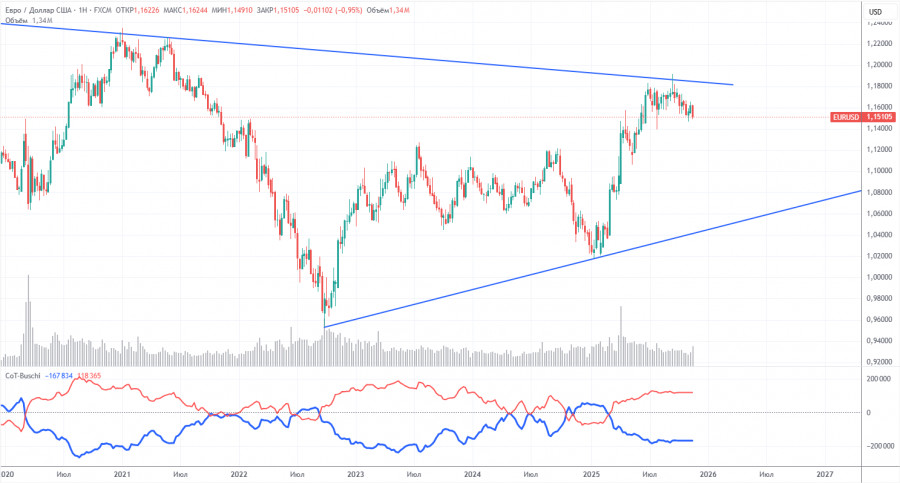

Po schválení rozpočtu v neděli pozdě večer následoval výprodej dluhopisů a akciových futures.
Americký trh s dluhopisy a akciovými futures se v pondělí otřásl, když agentura Moody’s (MCO) snížila úvěrový rating Spojených států, a zároveň se v Kongresu posunul kupředu rozsáhlý daňový a rozpočtový balíček prezidenta Donalda Trumpa. Oba faktory vyvolaly obavy investorů z rychle rostoucího zadlužení americké vlády, což se okamžitě promítlo do pohybu tržních ukazatelů.
Výnosy 30letých státních dluhopisů vzrostly o 0,11 procentního bodu na 5,01 %, což je nejvyšší úroveň od začátku dubna. Americký dolar oslabil o 0,7 % a akciové futures na indexy S&P 500 a Nasdaq ztratily přes 1 %, čímž trh naznačil, že obavy o fiskální stabilitu začínají mít globální rozměr.
Páteční rozhodnutí Moody’s zbavit Spojené státy nejvyššího ratingu AAA znamená historický okamžik. Jde o poslední ze tří hlavních agentur, která USA tento status odebrala. Jako hlavní důvod agentura uvedla rostoucí úroveň státního dluhu a zhoršující se rozpočtový deficit. Podle Moody’s je tempo zadlužování neslučitelné s dlouhodobě udržitelným financováním státu, a to i přes globální důvěru v americký dolar a státní dluhopisy.
Podle Nicolase Trindadeho z AXA je to důrazné varování, že Spojené státy nemohou brát své „exorbitantní privilegium“ – schopnost levně si půjčovat – jako samozřejmost. I když se snížení ratingu pravděpodobně nepromítne do nuceného prodeje dluhopisů, zvyšuje tlak na investory, kteří zvažují vyšší rizikovou přirážku za držení amerického vládního dluhu.

Dalším faktorem, který zvyšuje napětí na trhu, je Trumpova daňová a rozpočtová reforma, která zahrnuje daňové škrty v řádu stovek miliard dolarů, aniž by byla doprovázena odpovídajícími úsporami ve výdajích. Ačkoli část republikánů návrh zpochybnila, v neděli večer zákon těsně prošel rozpočtovým výborem, což trhy vnímaly jako další impuls ke zvýšení emisí státních dluhopisů.
Ekonomové upozorňují, že federální deficit, který v roce 2024 činil 6,4 % HDP, může dále narůst – a podle Výboru pro odpovědný federální rozpočet by navrhovaná daňová reforma mohla během 10 let zvýšit dluh až o 5,2 bilionu dolarů.
Trump reagoval na vnitrostranický odpor výzvou k jednotě: „Republikáni se MUSÍ sjednotit za jediný, velký, krásný návrh zákona,“ napsal na sociální sítě. Tento výrok ilustruje prezidentovu neústupnost vůči kritice rostoucího deficitu a jeho víru, že daňové škrty nakonec povedou ke zvýšení růstu a daňových příjmů.
Výrazný růst výnosů na dlouhém konci výnosové křivky signalizuje, že investoři požadují vyšší kompenzaci za riziko dlouhodobého držení amerických dluhopisů. Jak upozorňuje Subadra Rajappa ze Société Générale, větší deficit znamená nutnost větší emise dluhu – a tudíž vyšší tlak na tržní úrokové sazby.
Rizikem však nejsou jen samotné výdaje. Nejistota ohledně obchodní politiky, inflačních dopadů cel a rychlého rozšiřování strukturálních deficitů nahlodává důvěru v americká aktiva jako bezpečný přístav. I když si USA díky své ekonomické váze a statusu dolaru dlouhodobě udržují přístup k financování, současný vývoj vyvolává pochybnosti o kvalitě fiskálního řízení.
Wei Li z BNP Paribas dodává, že „přímým faktorem poklesu cen dluhopisů je snížení ratingu, ale mnohem zásadnější jsou hlubší strukturální problémy spojené s obchodními cly a inflací“.

V kontextu nestabilního geopolitického prostředí a sílícího fiskálního napětí v USA je možné očekávat, že:
Vláda tvrdí, že růst podpořený reformou vyrovná nové rozpočtové zátěže. Trhy ale už nyní tuto logiku zpochybňují – a projevují to cenami.
The EUR/USD currency pair started an upward move on Tuesday, and the market's reaction to the macroeconomic backdrop has finally become logical. To break it down, the price broke through and overcame another descending trend line, indicating further potential for price growth. Throughout the day, the euro indeed rose, significantly aided by the American reports. Retail sales data came in worse than forecasts, the ADP employment report was below expectations, and the producer price index did not upset the apple cart. Thus, we finally witnessed a decline in the dollar, but it ended swiftly near the Senkou Span B line. Therefore, it cannot yet be confidently claimed that the downward trend has ended, and the pair will not head towards the 1.1400 level, which is the lower boundary of the daily timeframe's sideways channel.
On the 5-minute timeframe, two trading signals were formed yesterday, but they left much to be desired. Initially, the price bounced off the 1.1542 level, but it only dropped by 10 pips. Later, the pair broke through a range of levels and lines between 1.1542 and 1.1563, but again only moved up by 10 pips. Thus, yesterday's trading session can be deemed unsuccessful, as the downward trend is not completely broken, and the Senkou Span B line has not been overcome.

The last COT report was published last week and is dated October 7, making it, to put it mildly, outdated. The illustration above clearly shows that the net position of non-commercial traders has long been "bullish." Bears barely entered the zone of their own superiority at the end of 2024 but quickly lost it again. Since Trump took office for a second time, the dollar has been falling. We cannot say with 100% certainty that the decline of the U.S. currency will continue, but current global developments hint at just such a scenario.
We still do not see any fundamental factors supporting the strengthening of the euro, but we do see enough factors supporting the decline of the dollar. The global downward trend still persists, but what significance does it have for the price movement over the last 17 years? The dollar could rise if the global fundamental picture changes, but currently, there are no signs of that.
The positions of the red and blue lines in the indicator continue to show a bullish trend. Over the last reporting week, the number of longs in the "Non-commercial" group increased by 3,300, while the number of shorts increased by 2,400. Consequently, the net position increased by 900 contracts over the week. However, this data is already outdated and irrelevant.

On the hourly timeframe, the EUR/USD pair continues to form a downward trend despite breaking the trendline. The price remains within the sideways channel of 1.1400-1.1830 in the daily timeframe, so a rise in the euro to the level of 1.1800 can still be anticipated within the local trend. However, for such a movement, a price fixation above the Senkou Span B line is required. Without this, the pair may target 1.1400.
For November 26, we highlight the following levels for trading: 1.1234, 1.1274, 1.1362, 1.1426, 1.1542, 1.1604-1.1615, 1.1657-1.1666, 1.1750-1.1760, 1.1846-1.1857, 1.1922, 1.1971-1.1988, as well as the Senkou Span B line (1.1580) and Kijun-sen line (1.1546). The Ichimoku indicator lines may change during the day, which should be taken into account when determining trading signals. Remember to set Stop Loss orders to break even if the price moves in the right direction by 15 pips. This will protect against potential losses if the signal turns out to be false.
On Wednesday, no significant events are scheduled in the Eurozone, while the U.S. will publish a relatively important report on durable goods orders. This report may provoke a similar market reaction to yesterday's—so, not the strongest, but at least something.
On Wednesday, traders can trade off the Ichimoku indicator lines. In the case of a bounce from the critical line, new long positions can be considered targeting the Senkou Span B line. If the Senkou Span B line is surpassed, consider long positiosn with targets set at 1.1604-1.1615 and 1.1657-1.1666. Short positions will become relevant if the price consolidates below 1.1542, with targets at 1.1495 and 1.1400.

QUICK LINKS